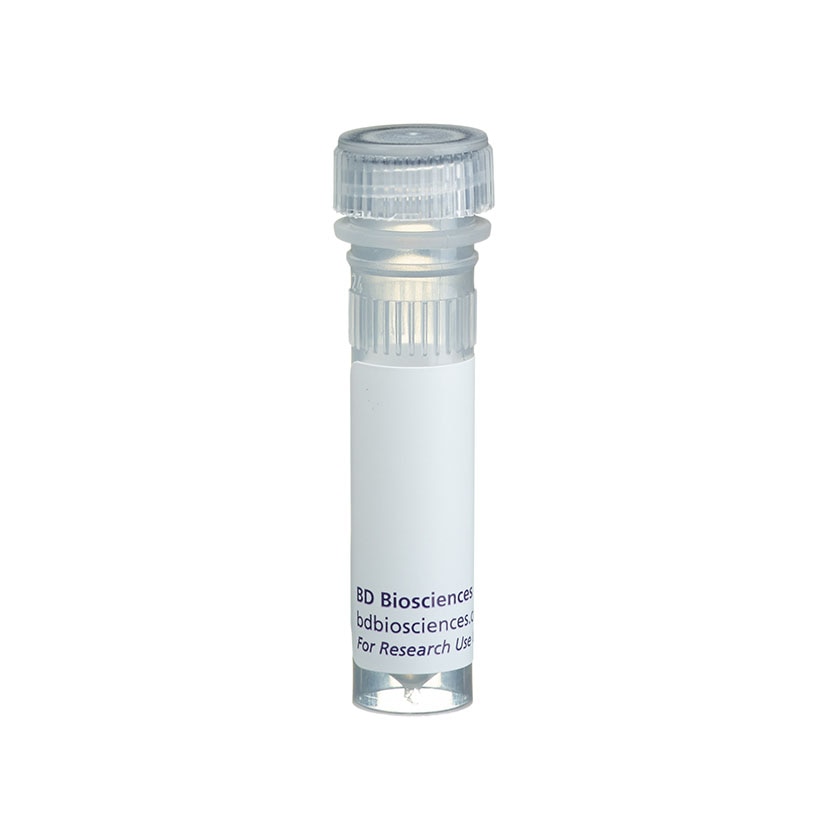-
Reagents
- Flow Cytometry Reagents
-
Western Blotting and Molecular Reagents
- Immunoassay Reagents
-
Single-Cell Multiomics Reagents
- BD® OMICS-Guard Sample Preservation Buffer
- BD® AbSeq Assay
- BD® Single-Cell Multiplexing Kit
- BD Rhapsody™ ATAC-Seq Assays
- BD Rhapsody™ Whole Transcriptome Analysis (WTA) Amplification Kit
- BD Rhapsody™ TCR/BCR Next Multiomic Assays
- BD Rhapsody™ Targeted mRNA Kits
- BD Rhapsody™ Accessory Kits
- BD® OMICS-One Protein Panels
-
Functional Assays
-
Microscopy and Imaging Reagents
-
Cell Preparation and Separation Reagents
Old Browser
Looks like you're visiting us from {countryName}.
Would you like to stay on the current location site or be switched to your location?
BD Pharmingen™ Biotin Rat Anti-Mouse IL-10
Clone JES5-16E3 (RUO)


Regulatory Status Legend
Any use of products other than the permitted use without the express written authorization of Becton, Dickinson and Company is strictly prohibited.
Preparation And Storage
Recommended Assay Procedures
ELISA Detection: The biotinylated JES5-16E3 antibody (Cat. No. 554465) is useful as a detection antibody for a sandwich ELISA for measuring mouse IL-10 protein levels. Biotinylated JES5-16E3 antibody can be paired with the purified JES52A5 antibody (Cat. No. 551215) as the capture antibody, with recombinant mouse IL-10 (Cat. No. 550070) as the standard. The biotinylated JES5-16E3 antibody should be titrated 0.5 -2.0 µg/ml to determine optimal concentration for ELISA detection. To obtain linear standard curves, doubling dilutions of mouse IL-10 protein ranging from ~2,000 to 15 pg/ml are recommended for inclusion in each ELISA plate. For maximal sensitivity, an overnight incubation (4°C) of samples/standards with the coated capture antibody is recommended. For specific methodology, please visit our web site, and go to the protocols section or see Chapter 7: ELISA for specifically measuring the levels of cytokines, chemokines, and inflammatory mediators and their receptors. in Techniques for Immune Function Analysis Application Handbook, both of which are located at www.bdbiosciences.com.
Note: This ELISA pair is recommended primarily for measuring cytokine from experimental cell culture systems. These ELISA reagents are not recommended for assay of serum or plasma samples. For measuring IL-10 in serum or plasma, the BD OptEIA™ Mouse IL-10 Set (Cat. No. 555252) is specially formulated and recommended.
Immunofluorescent Staining for Flow cytometric analysis: The JES5-16E3 antibody is useful for immunofluorescent staining and flow cytometric analysis to identify and enumerate IL-10 producing cells within mixed cell populations. FITC, PE and APC-conjugated JES5-16E3 (Cat. No. 554466, 554467, 554468) are especially suited for these experiments.
Product Notices
- Since applications vary, each investigator should titrate the reagent to obtain optimal results.
- Please refer to www.bdbiosciences.com/us/s/resources for technical protocols.
- Caution: Sodium azide yields highly toxic hydrazoic acid under acidic conditions. Dilute azide compounds in running water before discarding to avoid accumulation of potentially explosive deposits in plumbing.
Companion Products



The JES5-16E3 monoclonal antibody specifically binds to the mouse cytokine, Interleukin-10 (IL-10). IL-10 is also known as Cytokine Synthesis Inhibitory Factor (CSIF). It is produced by various activated cell types including CD4+ T cells, CD8+ T cells, T regulatory cells, NK T cells, B1 B cells, NK cells, macrophages, dendritic cells, mast cells, granulocytes and keratinocytes. IL-10 plays a pivotal role in regulating immune responses and protecting the host from damage caused by inflammatory and autoimmune responses. IL-10 has numerous biological activities including the inhibition of cytokine synthesis by activated T cells, NK cells, monocytes, and macrophages. In the presence of accessory cells, IL-10 inhibits mitogen- or anti-CD3 induced proliferation of T lymphocytes. IL-10 has also been shown to costimulate the development of thymocytes, B cell differentiation and the generation of cytotoxic T cells. The immunogen used to generate the JES5-16E3 hybridoma was recombinant mouse IL-10. JES5-16E3 is a neutralizing antibody.
This antibody is routinely tested by ELISA analysis. Other applications were tested at BD Biosciences Pharmingen during antibody development only or reported in the literature.
Development References (3)
-
Andersson U, Andersson J. Immunolabeling of cytokine-producing cells in tissues and in suspension. In: Fradelizie D, Emelie D, ed. Cytokine Producing Cells. Paris: Inserm; 1994:32-49.
-
Litton MJ, Sander B, Murphy E, O'Garra A, Abrams JS. Early expression of cytokines in lymph nodes after treatment in vivo with Staphylococcus enterotoxin B. J Immunol Methods. 1994; 175(1):47-58. (Clone-specific: Neutralization). View Reference
-
Sander B, Hoiden I, Andersson U, Moller E, Abrams JS. Similar frequencies and kinetics of cytokine producing cells in murine peripheral blood and spleen. Cytokine detection by immunoassay and intracellular immunostaining. J Immunol Methods. 1993; 166(2):201-214. (Clone-specific: Immunocytochemistry (cytospins), Neutralization). View Reference
Please refer to Support Documents for Quality Certificates
Global - Refer to manufacturer's instructions for use and related User Manuals and Technical data sheets before using this products as described
Comparisons, where applicable, are made against older BD Technology, manual methods or are general performance claims. Comparisons are not made against non-BD technologies, unless otherwise noted.
For Research Use Only. Not for use in diagnostic or therapeutic procedures.
Refer to manufacturer's instructions for use and related User Manuals and Technical Data Sheets before using this product as described.
Comparisons, where applicable, are made against older BD technology, manual methods or are general performance claims. Comparisons are not made against non-BD technologies, unless otherwise noted.